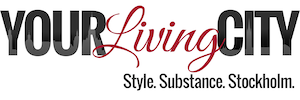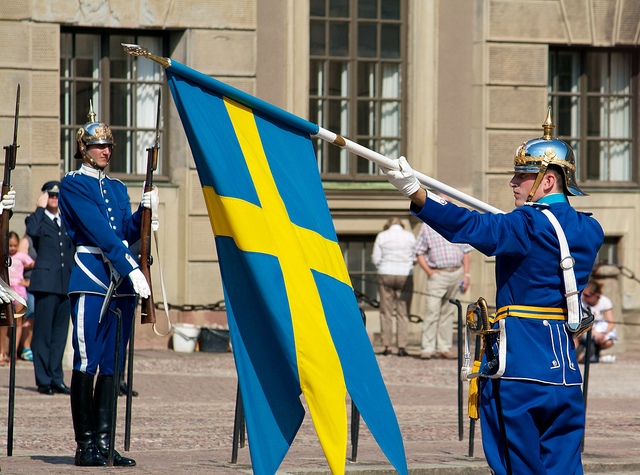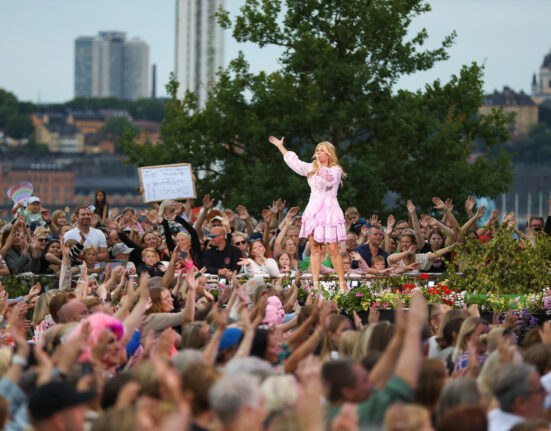I must admit, understanding Swedish politics is quite a difficult task. With over 240 different local, municipal and country wide parties, its hard to keep it straight. Now after this historical election year, I have a handle on Swedish politics. So here’s my take on Swedish politics.
COALITIONS/ALLIANCES OF INDIVIDUAL PARTIES
In this post I will not discuss the local parties, and will begin with the State/Country-wide parties which are either part of a coalition or represented individually, in which they try to obtain the majority of vote for their individual Party Leader for the position of Prime Minister of Sweden or a larger representation in the Parliament.
Before going in depth defining the individual major parties, it is imperative to understand the background on coalitions and which individual parties are working together (e.g., Red-Green Coalition and The Alliance Coalition).
The Alliance consists of four center-right parties in which their individual leaders created a declaration to work toward a viable center-right government which would be an alternative to the long standing center-left ‘Social Democrats’, whom had power for the 23 of the previous 26 years. The Alliance won the majority in 2006 for the first time and just this past Sunday (yes imagine on a Sunday for voting, 19-Sept 2010), has won the most seats overall and re-elected Prime Minister Fredrik Reinfeldt. However, the alliance did not obtain the required minimal of 175 seats (just short of three) needed to obtain the majority of the parliament to push through their policies, so they must collaborate.
The Alliance consist of: Moderates, Liberals (Folkpartiet), Center, Christian Democrats
What’s confusing for an American, we would never combine the concept of ‘Christian’ Democrats with the ‘Liberals’. Yes, (I know) there are Moderates in the America that have Liberal social views and conservative fiscal policies. If I had to personally compare this coalition to the USA landscape, I would use the metaphor of a recipe; (2) Cups of Independents, (1) Cup of Moderate Republicans and a half of a cup each Liberals & Moderate Democrats and at the end throw in a couple of dashes of ideology of privatizing Government public agencies/assets such as the Apotek for taste. Try not to get confused, it’s hard to compare apples and oranges. Note, these Swedes are not thinking to completely dismantle the Welfare system (we Americans say, don’t throw out the ‘Baby with the bath water’). But enough of my rambling on this oxymoron.
The Red-Green Coalition consists of three parties, Social Democrats, Green Party, and Left Party and their Party leaders are Mona Sahlin, Peter Eriksson/Maria Wetterstrand and Lars Ohly.
The centre-left Red-Green coalition was formally announced on December 7th 2008 after the parties had managed to reach agreement on basic principles of their economic policy. The Red-Green parties are going to the polls on a platform of welfare investment over tax cuts. While the coalition has promised tax cuts of up to 17 billion kronor for pensioners, it rejects further tax cuts for wage earners and proposes the reintroduction of some form of wealth tax.BREAKING DOWN THE MAJOR PARTIES INDIVIDUALLY
They are not listed in any particular order
- Social Democrats: The Social Democrats were founded in 1889 and are thus the eldest party in Swedish politics. Mona Sahlin is the party leader and and bid to become Sweden’s first female prime minister in this latest election. She has failed to bring the party back after two failed election and they may decide to shake things up. The party is the most successful in Swedish political history (overall for longevity), dominating post-war government and credited with being responsible for the massive expansion of Sweden’s welfare state. She was roundly criticised by Swedish Trade Union Confederation (LO) for launching a two party coalition with the Green Party, and excluding the Left Party, in October 2008. The Left Party later joined what became the Red-Green coalition.
- Left Party: The Left are currently the third largest party within the centre-left Red-Green coalition that is fighting to wrestle back power after four years in opposition. Lars Ohly is the party leader, a former Train Conductor. The Swedish Left Party (Vänsterpartiet) has its roots in a movement which split from the Social Democratic party in 1917. The party discarded the word Communist from its name in 1990. While the party has never served in government, the Left acted as a support party, together with the Greens, to the Social Democrats between 1998 to 2006. The Left has rebranded itself as the ”Welfare Party” for the 2010 election and is campaigning on a platform of high public spending and tax rises. Lars Ohly’s difficulty in clarifying his relationship to Communism remains a complicated issue for the image of the Left Party.
- Green Party: The Greens are bidding to become the second largest party within the centre-left Red-Green coalition that is fighting to wrestle back power after four years in opposition. Maria Wetterstrand and Peter Eriksson are the party spokespersons. The Swedish Green Party (Miljöpartiet de Gröna) was founded in 1981 and is thus the youngest parliamentary party. The party emerged out of the movement opposing nuclear power and first gained parliamentary seats in 1988. The party’s appeal has extended from its original environmentalist hardcore to attract most of its support among the young, female, urban middle-classes. In the mid-1990s the party took a stand against Sweden’s membership of the European Union, although the policy demanding a new referendum was finally discarded in September 2008. While acting as a support party for the Social Democrats from 1998-2006, the Greens pushed their green tax agenda advocating a general shift in taxation policy towards higher taxes on unsustainable and environmentally unfriendly practices and products. The party was the first to raise the issue of climate change in Sweden and is credited with pushing the issue into the political mainstream. The party has long campaigned as a party that looks forward and not to the left, or the right on the political scale. The 2010 election campaign is no exception with the party pledging to ”Modernise Sweden”. The Swedes are definitely more environmentally friendly than the Americans. It’s instill in mostly everyone from birth, culture, irregardless of what party you identify with. It’s just a matter of how much does it weigh on your collective political views.
- Moderates: The Moderates are a centre-right, liberal conservative political party founded on October 17th 1904. By the early 1970s, and under the stewardship of Gösta Bohman, the party shifted from traditionalist conservatism to a more liberal approach to the economy and the party governed in various coalition constellations from 1976 until 1982. Prime Minister Fredrik Reinfeldt is the current party leader. Reinfeldt relaunched the party in Blairite fashion as ”the New Moderates” and worked to form a viable political alternative to the Social Democrats as part of the four-party Alliance for Sweden. The Moderates have also pushed through the end of national service and the abolition of wealth tax. The party is pushing its line on jobs and crime, and argues that it is the party to trust with the public purse.
- Liberals (Folkpartiet): The Liberals are one of the three smaller parties which make up the centre-right Alliance coalition that has been in government since 2006, having polled 7.5 percent in the 2006 general election. Education minister Jan Björklund is the party leader. The Liberal Party (Folkpartiet liberalerna – fp) is a social liberal political party with roots dating back to the end of royal autocracy in 1809. The party’s base is mostly among the middle-class and is known for its positive stance toward the euro, EU, nuclear power, and Nato, and for its no-nonsense profile on education issues. The Liberals enjoyed a successful 2002 election, in an otherwise disappointing year the centre-right, but was criticised for adopting populist right-wing rhetoric when proposing a language test requirement for obtaining Swedish citizenship. Jan Björklund is a former army major and school-teacher, known for his tough stance on order in schools. Björklund recently aired his view on the re-nationalisation of the public schools system and supports more open immigration, especially for economic migrants. I would love to hear comments from Americans regarding the glaring oxymoronic name, the “Liberals” with the near opposite definition of what we would identify as Liberals. You probably need to read more to understand my confusion.
- Centre Party: The Centre Party is one of the three smaller parties which make up the centre-right Alliance coalition that has been in government since 2006, having polled 7.9 percent in the 2006 general election. Enterprise minister and vice-prime minister Maud Olofsson is the party leader. The Centre Party (Centerpartiet) describes itself as social liberal and maintains close ties to rural Sweden and environmental issues. The party was founded in 1913 as the Farmers’ League (Bondeförbundet) and spent its early years as the closest ally of the Social Democrats, forming a government coalition in 1951-57 as well as in the war years. The party is now established as a classically liberal party and has since 2006 governed as part of the centre-right Alliance coalition. The party’s focus has shifted from rural areas to the cities, and from farming to small business, and during the last election year in 2006 was the fastest growing party in Stockholm. Maud Olofsson dominates the Centre Party’s election campaign which is focused on jobs, business, and the environment, and is being fought under the slogan ”The Alliance’s green choice.
- Christian Democrats: The Christian Democrats (Kristdemokraterrna – KD) are one of the three smaller parties which make up the centre-right Alliance coalition that has been in government since 2006, having polled 6.6 percent in the 2006 general election. Social minister Göran Hägglund is the party leader. The Christian Democratic party was founded in 1964 but did not enter parliament of its own accord until 1991. The party has its roots in the decision to end religious education in elementary schools and it retains strong ties with religious and evangelical groups. Now this is definitely opposite to our Christian groups in America. Since the mid-1980s the party has remained firmly on the centre-right of Swedish politics and espouses a brand of conservative neo-liberalism. While the party’s profile is based on Christian conservative values, Göran Hägglund has sought to modernise the party somewhat, having for example adopted a pro-choice stance on abortion. The party’s support of legislation enforcing the right of gay couples to marry is further indication of ideological shift during the 2000s.Göran Hägglund dominates the Christian Democrats’ election campaign which is being fouight under the slogan of ”A more humane Sweden”. The party’s focus is on the family, care for the elderly, improving conditions for small business and lowering taxes. Now Americans, can we do the same thing! Pro-Choice, and Gay Marriage! You can believe in these policies and still believe in God.
- Sweden Democrats: The Sweden Democrats (Sverigedemokraterna – SD) polled 2.6 percent of the votes in the 2006 parliamentary elections. Jimmie Åkesson is the party leader. The Sweden Democrats were founded in 1988 and in contrast to other far-right parties across the EU, has roots in the neo-Nazi movement, specifically the Keep Sweden Swedish (Bevara Sverige Svenskt) group. The party under Mikael Jansson, and now Jimmie Åkesson, has worked hard to tone down its more extremist elements in recent years in an attempt to attract a broader base of support outside of its core of young working class males. The party’s ideology is based on nationalism and social conservativism. Immigration underpins all of the Sweden Democrats’ policy positions, with immigrants and Sweden’s culturally mixed society argued to be the source of all of the country’s perceived ills. The party campaigns against immigration and multicuralism and argues for the construction of a culturally homogenous Sweden. The party has a stated aim of being the kingmaker in the Swedish parliament. To do so it would need to poll above 4 percent of the votes in which they actually recevied approx 5.6%. If Alliance coalition and one of the parties in the red-green coalition do not work together to form a bigger alliance, this party could indeed be a deciding factors on votes or (a stalemate) to make the government ineffective altogether.
- Feminist Initiative: The Feminist Initiative (Feministiskt Initiative – Fi) polled 0.68 percent of the national vote in the 2006 parliamentary elections. Former Left Party leader Gudrun Schyman is the official spokesperson. The Feminist Initiative is a feminist political party founded in 2005 and first stood in the 2006 general election. Fi had generated a great deal of media hype by the time the party announced its official launch in September 2005. Gudrun Schyman was at that time an independent member of parliament. According to surveys undertaken in 2005 (and again in 2010) up to ten percent of Swedes stated that they could consider voting for the party but come election time active voter support had declined to 0.68 percent.
- Pirate Party: The Pirate Party competed in the 2006 general election, polling 0.63 percent of the votes but became the the third largest party in terms of membership by May 2009. The party continues to lobby against copyright and patent legislation. The party announced in August that it would be hosting some of the whistle-blower website WikiLeaks’ servers. This party also aimed to become kingmaker in the Swedish parliament, however,they did not received the required 4% of the votes.
My research came from The Election Authority´s web site in English and from The Local, which is a Swedish Newspaper in English.
Post by: Shirley Å Johansson
http://www.shirleyjohansson.eu/
Jan 14, 2011












